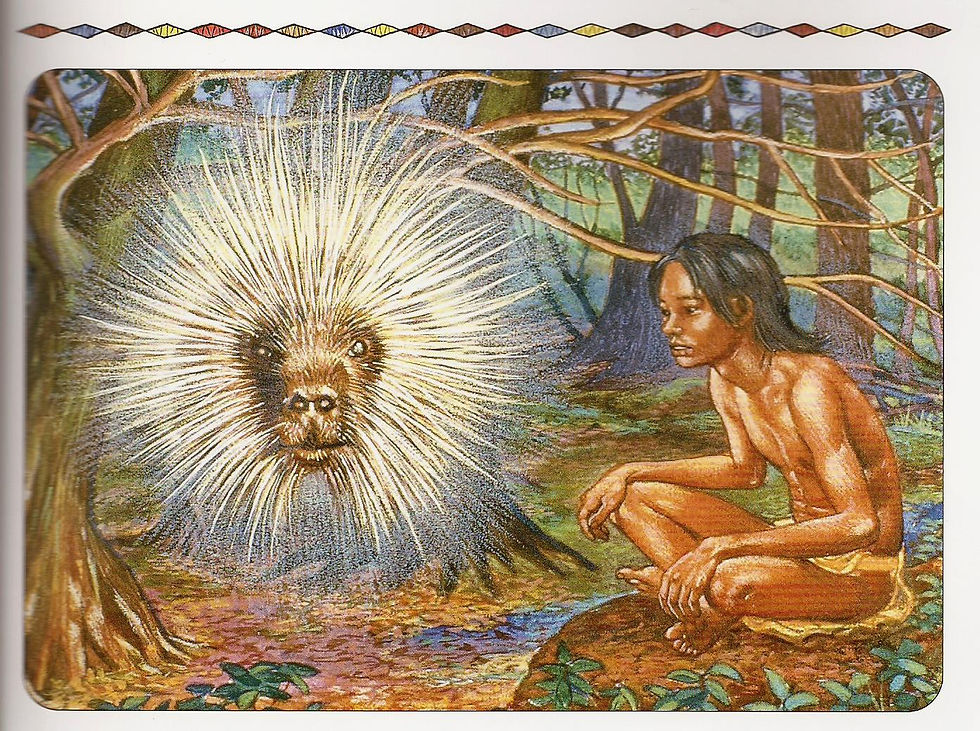Ojibwa Culture: Coming Of Age Traditions
- Erica Antinello

- May 26, 2018
- 3 min read
In Ojibwa culture there are 3 main coming of age traditions; vision quests, the first kill ceremony and berry fasting. Vision quests and the first kill ceremony are typically completed by male preadolescence versus berry fasting which is done by female preadolescence.
Vision Quests - A vision quest is typically completed just prior to or following hitting puberty. Traditionally, this is a custom among male children though modern day tribes have seen an increase in female participation. The child first spends a couple days in a sweat lodge, fasting, only drinking a tea made in part with datura. Datura is a wild flower known to cause delirium, anesthesia and erratic behavior. The children were given this in hopes they would forget what it is like to be a child so they may now learn to be an adult. The child would then venture into the woods anywhere from 4-8 days thinking about life and absorbing the environment, returning only once they have sought a strong enough vision. A child who could not complete the vision quest is thought to lack direction in life. Women can also experience vision quests during times of menstruation. Menstruation is viewed as women’s sacrifice to bleed and bear children therefore they often remain secluded, cared for by other women, rest and receive ‘dream guidance’ which are perceived like vision quests.
The First Kill Ceremony - In Ojibwa culture, when a boy achieves his first hunting kill it is cause for a celebration. The kill symbolizes a boy turning to a man, as he now knows how to be a provider for his family. The family will prepare the meat which will be shared at a feast within the next day or so. To begin the ceremony, an elder will present the young hunter with an eagle feather and remind him of the uses of hunting - only for intentions of feeding the tribe. This will be followed by a drum circle, where the young hunter will receive a multitude of blessings. Before the feast begins, an elder will offer the first bite of meat to the young hunter who must reject this offer, to which the elder will reply “who will you offer it to?” The hunter will respond with “The children, who are too vulnerable and young to hunt.” The elder will then offer the second piece of meat to the hunter to which he must respond “No. It is for the elders because they are too old and weak to hunt - and the rest of the meat I will give to the people of my reservation.” The elder will then feed the young hunter a single piece of meat while the rest is given away to other tribe members. The hunter does not get to enjoy his first kill because it symbolizes the unselfishness in which he is to lead his life.
Berry Fast - To mark a female’s end of childhood/coming of age, they will perform a berry fast in which they will not eat berries for an entire year and meditate in a sweat lodge frequently. During this year, she meets with older women and learns about the roles she will take on as a mother one day. Typically, this happens when a girl hits her first menstruation.

Sources:
http://firstnationsrituals.blogspot.ca/p/the-vision-quest.html
https://www.culturalsurvival.org/publications/cultural-survival-quarterly/hallucinogenic-plants-and-their-use-traditional-societies
http://comingofagebetweenojibweandusa.blogspot.ca/2014/05/north-american-indian-boy-girl-quests.html
http://firstnationsrituals.blogspot.ca/p/the-vision-quest.html
https://getnakedandstartcooking.wordpress.com/2014/03/15/first-kill-from-boy-to-manhood/
http://comingofagebetweenojibweandusa.blogspot.ca/
http://muskratmagazine.com/my-berry-fast/





Comments